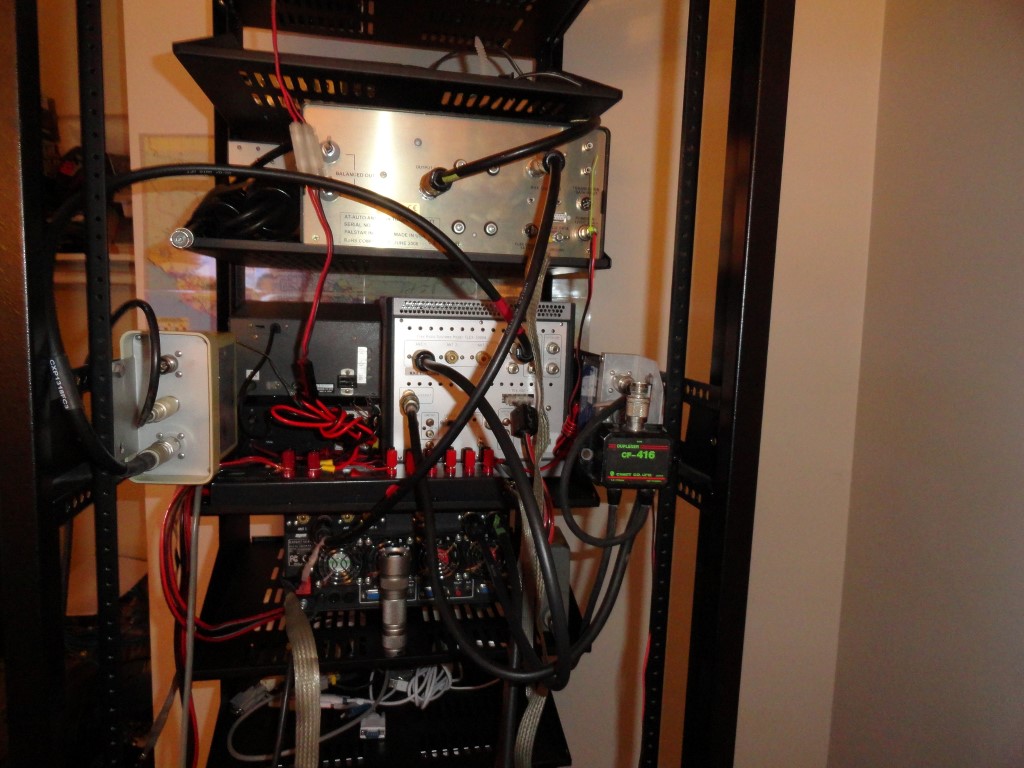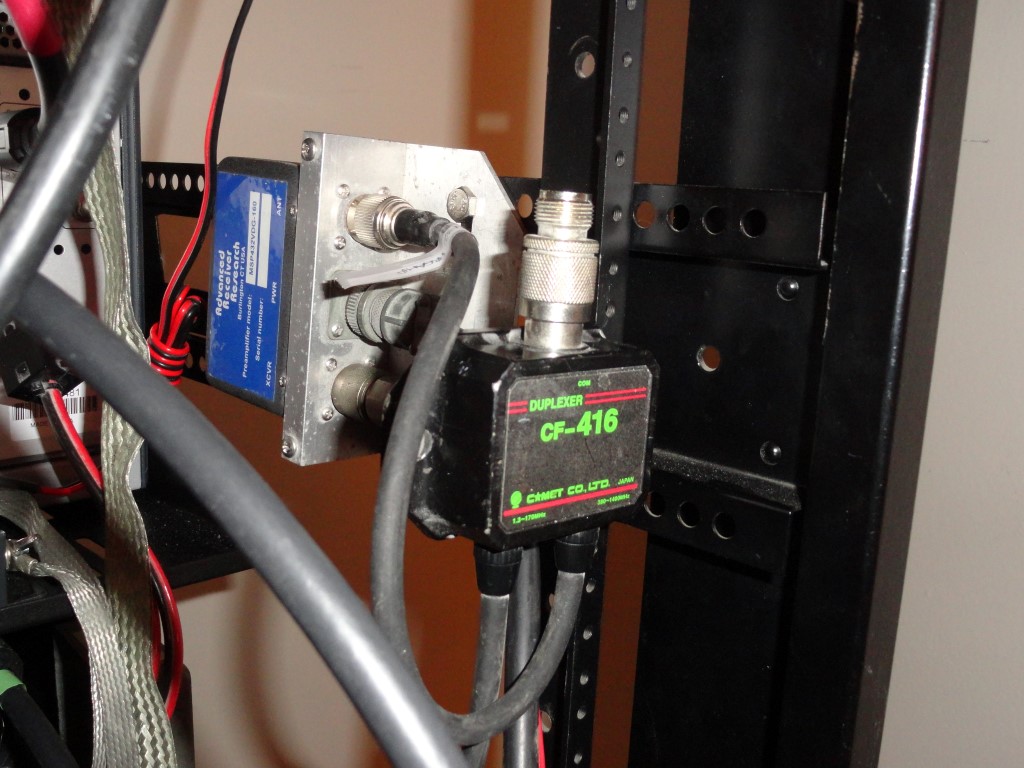Steady progress today as the Mode J Desense Filter and the following items were completed:
- Mounted the VHF / UHF Satellite Preamps
- Mounted Mode J Desense Filter
- Connected all the RF jumpers
- Connected all remaining DC

The AC power is next, then the panels for the rear RF connectors. Several antennas will connect to SO239’s mounted on a rear rack panel for quick disconnect and coax cable strain relief. The two HF antennas will connect directly to the amplifier output (Mosley), and tuner output (HF Dipole) respectively.

The Mode J Desense Filter info from the AMSAT website.
A Simple Desense Filter for Mode-J Satellites
Background
If you have a hard time hearing your own downlink but have no trouble hearing other stations, you may be experiencing “desense.” Desense is where your transmitter signal overloads your preamp (or receiver) causing it to become temporarily less sensitive. This overload condition may also be accompanied by white noise or intermodulation distortion where you hear distorted signals in your receiver, including possibly your own transmit signal, but only when you are transmitting. If reducing your transmitter power clears up this condition, you are most likely experiencing desense. Desense problems can occur on any frequency and even commercial radio installations sometimes experience these problems, but it is especially common when transmitting on 2 meters and receiving on 70 cm to work mode-J satellites.
Several solutions exist and an easy one is to just reduce your transmit power. This may solve the problem but it will probably limit your ability to operate when satellite conditions are difficult such as near AOS or LOS or when the satellite transponder is especially busy.
Another way to solve this problem is to increase the separation of your 2 meter and 70cm antennas. This will always work if you get them far enough apart (10-20 feet) but it may not be practical for many stations.
A third solution is to install a high-pass or band-pass filter in-between the 70cm antenna and the preamp or receiver. An easy way to accomplish this is to use a 2m/70cm duplexer. Note that technically these devices are diplexers but nearly all hams and ham radio manufacturers call them “duplexers.” A typical device provides 60dB of rejection betwen the 2-meter and 70cm ports and this is generally sufficient to eliminate a desense problem.